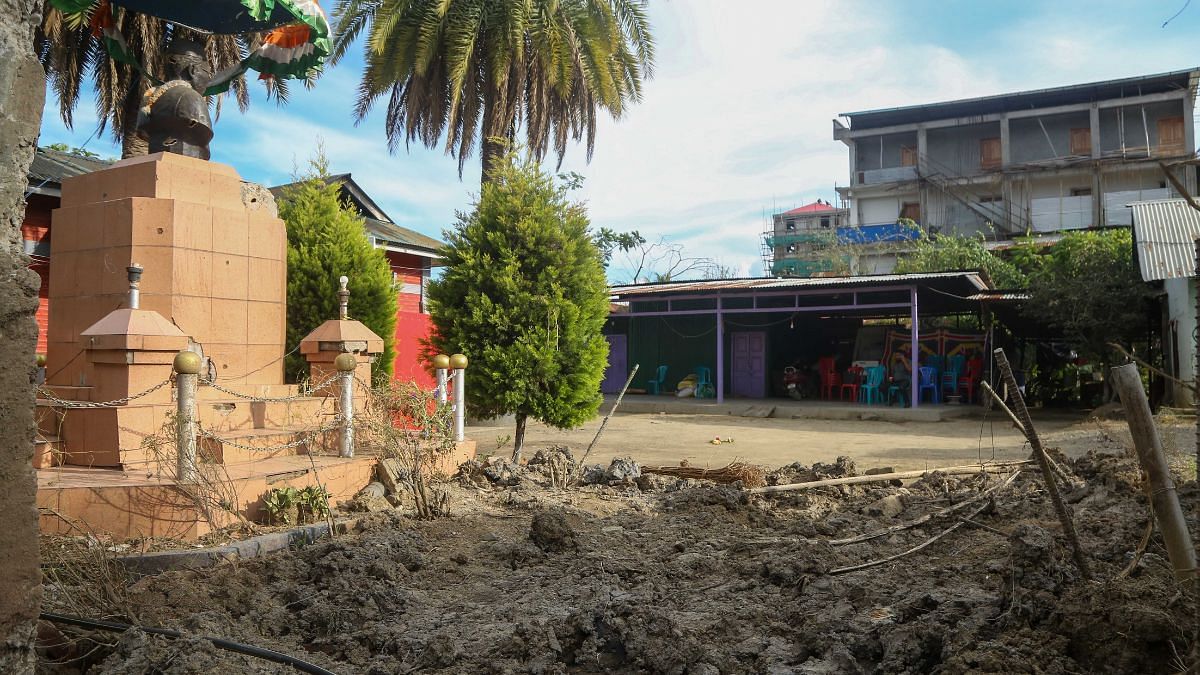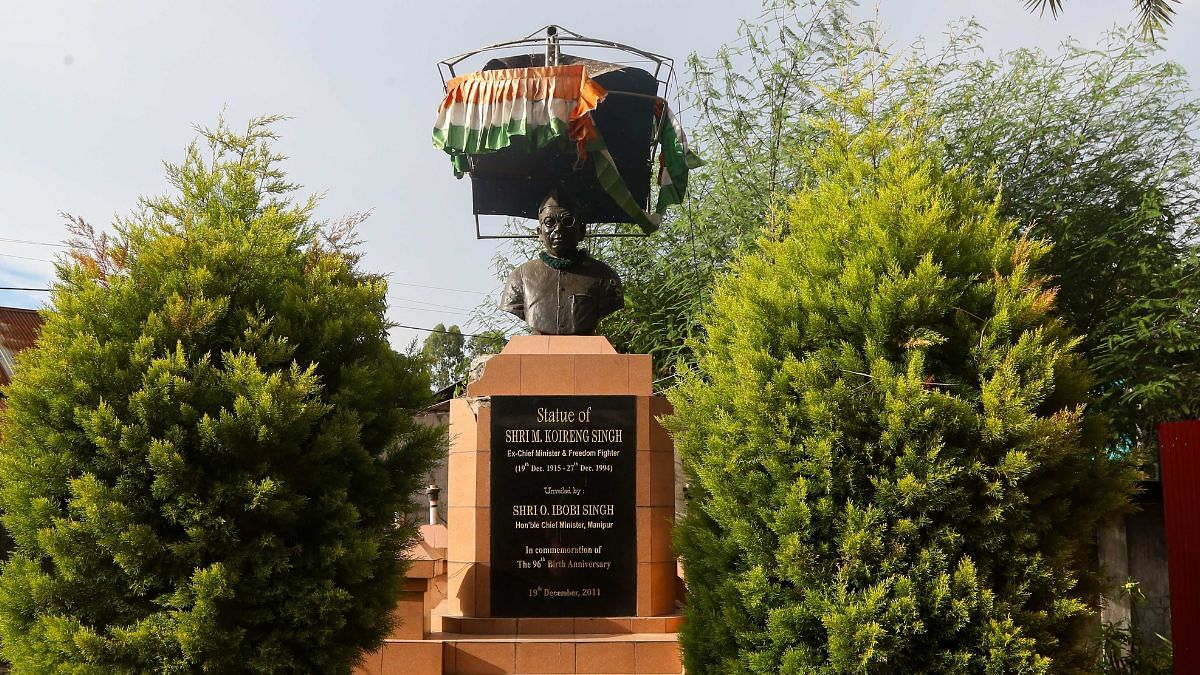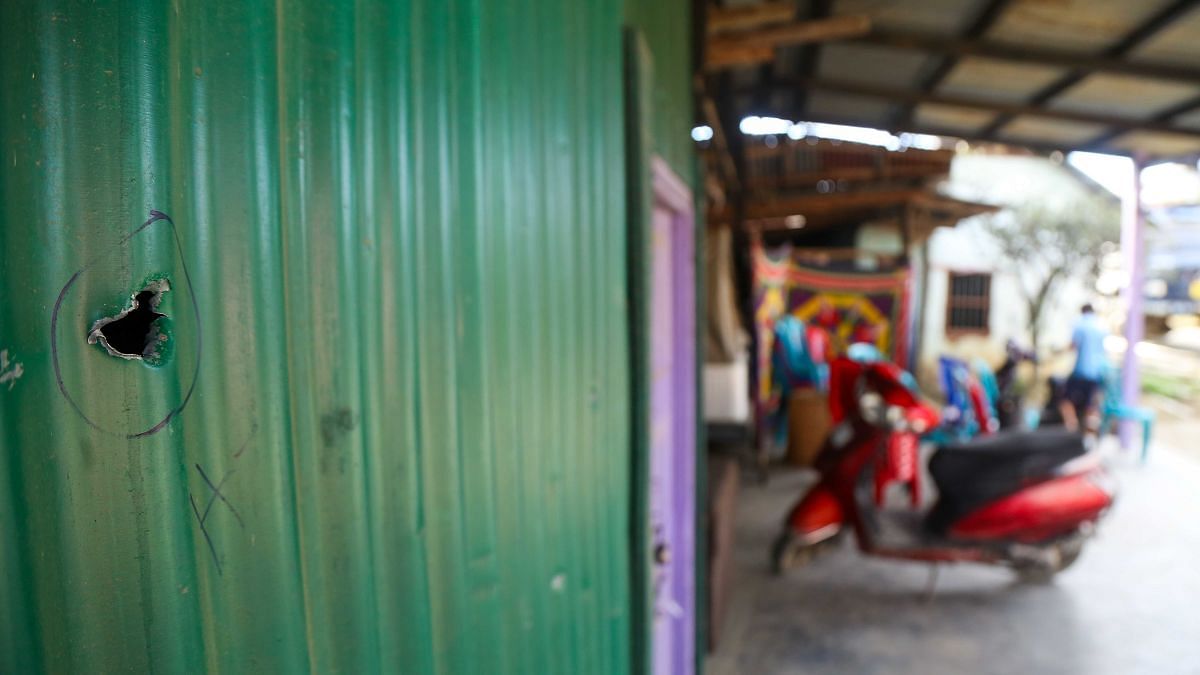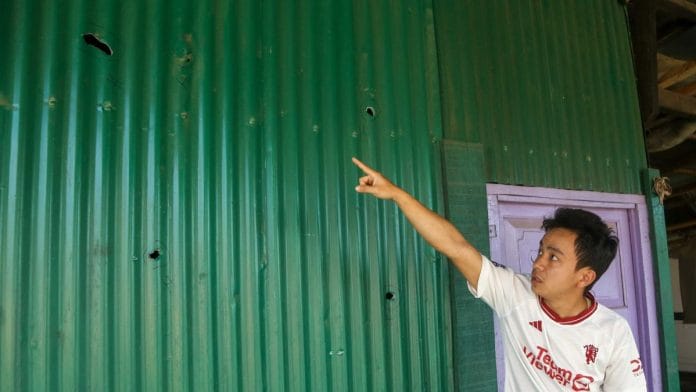Moirang: It was a quiet Friday evening in the valley town of Moirang in Manipur’s Bishnupur district.
Mairembam Kelvin, along with his family and a 70-year-old priest, was preparing for a religious ritual in the compound of a house that had belonged to his late grandfather, the first chief minister of Manipur.
On his way to his room to fetch something, he heard a loud supersonic boom. The ground under his feet shook, the glass panes of the windows shattered, and wails filled the air.
He rushed out to see what had happened and realised it was a “rocket bomb attack”.
Earlier in the day on 6 September, a similar rocket had landed in Bishnupur’s Tronglaobi village—on the bathroom of a house. It damaged the house, but no one was killed or injured.
This time, it was different.

Kelvin looked around and found the priest, R.K. Rabei, lying still on the ground, his head oozing blood. Five others, including his sister, looked injured.
“I went numb. For a while, I did not realise what had happened. Then I saw that a huge rocket filled with explosives had landed just metres away from the compound—where the priest and 10 members of my family had been preparing for a religious ceremony. I rushed my sister to the hospital,” he told ThePrint.
The holes in the tin shed in the compound of the house of the late CM Mairembam Koireng Singh, showed that as the rocket bomb fell, its splinters went in several directions, killing the priest on the spot. The rocket also created a gaping pit where it landed because of its weight—close to 24 kilograms.

It was the first time that an attack in the ongoing violence in Manipur had used such a heavy, rocket-like explosive. This explosive is a significant advancement over the previously used ‘pampi gun’ made of a steel pipe with a rope attached to it—which lacked range.
A similar rocket had landed in a paddy field in the area on 24 August but did not blast. Sources said the length of that rocket was around 9 feet, and it weighed about 25 kg.
The incident, sources in the security establishment said, marked a significant escalation between the Kuki and Meitei communities that have been embroiled in a violent conflict in Manipur.
Although crude, the rocket bomb that killed the priest was “potent” and could have caused much more damage, sources said.
The attack was the third by bombs or bomb-like objects since 1 September this year after nearly a four-month lull in the Manipur conflict.
Over the past two weeks, eleven people have been killed in the violence in Manipur and several others have been injured.
Sources said they suspect someone fired the rocket bomb from the hills. It was an “unprovoked attack”.
Speaking to ThePrint, Indigenous Tribal Leader’s Forum (ITLF) leader Ginza Vualzong said that Kukis do not have such sophisticated rockets and have been using only ‘pampi guns’ for their self-defence.
“So far, we are not sure who fired the so-called rocket. Kukis do not have rockets, but we do have indigenous ‘pampi’, which is not a military-grade rocket. It is made from a steel pipe and is not accurately on target. It’s locally made for defending our village,” he said.
“Moreover, Moirang is far from the boundary of the Kuki villages. No one has a ‘pampi’ whose fire reaches that far…. Trying to make us look bad,” he said.
Also Read: ‘It was like heavy rain’: Grieving husband recalls non-stop firing as Manipur burns again
Security forces conducting searches
According to sources in the security establishment, the rocket bomb that killed the priest consisted of a roughly nine-foot-long iron pipe, including a two-foot-long explosive warhead tip at the front. The pipe had six fins at the tail to stabilise its flight.
At a gap from the warhead is the part of the pipe containing solid fuel, which burned and gave a boost to the flight of the rocket. The warhead contained explosives, iron nails, iron bolts, and splinters.

“It is an improvised rocket but a much bigger one. On firing the rocket, it consumed the solid fuel, and as it fell on the ground, the two feet of explosives towards the tip exploded. Since it had splintered, it went in different directions after the explosion, causing injuries,” the source said.
The source added that the propellant of the rocket weighed approximately 24 kg, but it must have been at least 40 kg before it had been fired.
The source said these improvised rocket bombs are a “cause of concern” as there is “no mechanism to stop them” and also because of their reach.
“The earlier improvised weapons, even rockets, could not reach this far. The range of this weapon is eight to 10 kilometres—which is of grave concern. It means that the attacks will not just be limited to the fringes. Once aerial attacks such as these, including drone attacks, start, it becomes even more challenging to contain the situation,” the source said.
In a counter, the security forces have now started conducting searches, combing operations, and area domination exercises within 5 km of the villages in the hill areas.
“Earlier, we did it only in the fringe areas but now have started going deeper into villages. The searches have resulted in seizures, and we are also carrying out sensitisation programmes with the village defence volunteers to tell them that using such improvised explosives is against the law and can cause grave damage,” he said.
“We have been trying to tell them that escalation of this war will only bring more devastation to both sides,” he added.
Also Read: Arson, stone pelting in Manipur’s Thoubal. Students want central forces, CM to go
‘This has escalated to another level’
The residents of Moirang never expected that despite living far from the fringe area, where violence has remained concentrated, they could come under such an attack.
“This has escalated to another level. Although there was fear, we never thought an explosive could land in Moirang. We never expected that such a weapon could land here. It is quite far from the fringe area, where violence has remained concentrated,” Kelvin said.
The attack, Kelvin said, is an indication that the war has reached the next stage, and “no one is safe”.
“Now, no one is safe. If a rocket could reach this far, it will only get worse from here. They (attackers) can do it again; who is there to ensure our safety? So many troops remain deployed here, but for what? This needs to stop,” he said.
The residents are living in fear. Soon after the rocket attack, many of them fled the area to go further into the valley. For many, however, that is not an option.
“For how long can we all live in fear? Why are the government, military and police not doing anything? How is it possible that a rocket filled with explosives came flying and landed in our area, and they have no clue who did it? We all will keep dying; they will not bat an eyelid,” a resident, R.K. Beetam, told ThePrint.
He added that he left Moirang for a few days after the attack but had to return. “We left in fear, just like many other families, but one cannot leave their homes for too long. We came back. Others are also coming. Ones who could afford have left to stay close to the valley, further away from hills. But is running away a solution?” he asked.
Kelvin said people are tired of this conflict, and it must end. He added that they do not expect a solution from the government.
“This has been going on for over a year. The response by the Centre has not been satisfactory at all. We all want normalcy, irrespective of the communities. This must end,” he said.
(Edited by Madhurita Goswami)
Also Read: Delhi’s Meitei groups blame ‘foreign forces’ for drone attacks in fresh wave of violence in Manipur






